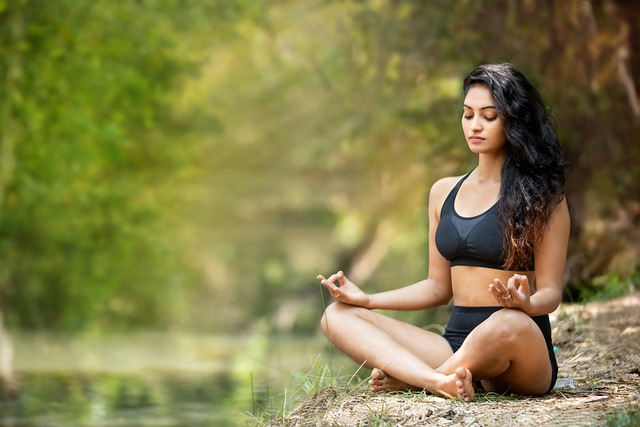In the quest for holistic well‑being, many people turn to the serene world of yoga. A yoga retreat offers a sanctuary where the mind, body, and spirit can realign. This article explores why a yoga retreat is an indispensable component of fitness training, how it nurtures health, and what to expect when you step into this transformative experience.
What Is a Yoga Retreat?
A yoga retreat is more than a weekend of poses; it is an immersive program that blends daily practice with meditation, breathing techniques, and mindful living. Typically lasting between one and four weeks, participants immerse themselves in a dedicated environment free from daily distractions. The setting often emphasizes simplicity, encouraging travelers to reconnect with their inner rhythm through sustained asanas, restorative sequences, and intentional breathing. The retreat’s design is crafted to support deep physical alignment, mental clarity, and a heightened sense of community.
Core Benefits for Fitness
From a fitness perspective, a yoga retreat sharpens strength, improves flexibility, and enhances cardiovascular endurance. By focusing on controlled movements and precise alignment, practitioners build functional muscle tone while minimizing injury risk. The repeated practice of dynamic flow sequences stimulates circulation, leading to improved recovery times. Furthermore, the integration of breathwork elevates oxygen delivery to working tissues, amplifying the overall effectiveness of each workout session.
Training Programs
Retreats typically offer a tiered training structure, ranging from beginner workshops to advanced power yoga sessions. Each tier is designed to match the participant’s current fitness level while progressively challenging the body. Many programs incorporate complementary disciplines such as Pilates, tai chi, or functional strength drills, creating a holistic routine that addresses all aspects of athletic performance. Instructors monitor technique, provide individualized feedback, and adapt sequences to meet diverse goals like increased endurance, better posture, or higher joint mobility.
Nutrition at a Yoga Retreat
Nutrition at a yoga retreat is a thoughtfully curated complement to physical training. Menus prioritize plant‑based, whole‑food ingredients that supply essential macro and micronutrients without excess additives. Light, balanced meals fuel sustained energy for practice, while mindful eating practices reinforce body awareness. Many retreats offer cooking demonstrations, allowing participants to learn how to prepare simple yet nutrient‑dense dishes that support recovery, maintain healthy blood sugar levels, and promote long‑term digestive resilience.
Mental Health Gains
Beyond the physical, yoga retreats cultivate profound mental well‑being. Structured meditation blocks, guided visualization, and mantra chanting calm the nervous system, reducing cortisol levels and fostering a sense of tranquility. Participants often experience improved sleep quality and a sharper focus during daily tasks. The communal setting encourages open dialogue, allowing individuals to share insights and support one another. Over the course of the retreat, the cumulative effect of these practices nurtures resilience, emotional balance, and a renewed sense of purpose.
Yoga is not about touching your toes, it’s about what you learn on the way down.
The Power of Community
The sense of belonging that emerges at a yoga retreat is a powerful catalyst for sustained motivation. In a shared space, strangers quickly become practice partners, confidants, and friends. Group sessions create a rhythm of encouragement that pushes participants beyond personal limits. The post‑retreat community often extends through online forums or follow‑up meetups, ensuring that the supportive network continues to thrive long after the final sunrise.
Experienced Instructors
Guidance from seasoned instructors is the backbone of a successful yoga retreat. These teachers bring years of practice, deep anatomical knowledge, and an ability to adapt sequences to varied skill levels. They also model mindfulness, demonstrating how breath and intention can transform a simple pose into a therapeutic tool. By observing and receiving personalized adjustments, participants learn to refine alignment, avoid common pitfalls, and cultivate a sustainable practice that can be integrated into everyday life.
Facilities and Environment
A yoga retreat’s surroundings are intentionally designed to support stillness and movement alike. Natural light, open air, and minimalistic décor foster a calming atmosphere that encourages deep breathing. Many locations feature meditation gardens, natural water features, or hillside views, providing sensory cues that enhance focus. The accommodation is typically simple, with clean linens and organic bedding, allowing participants to unwind fully after a vigorous session without the distraction of modern amenities.
Typical Retreat Schedule
A standard retreat itinerary balances structured practice with restorative downtime. Mornings often begin with sunrise yoga, followed by a brief mindfulness meditation. Throughout the day, participants rotate through power sessions, restorative flow, and breathwork workshops. Lunch provides a nourishing plant‑based spread, while afternoon tea offers a gentle stretching routine. Evenings close with guided reflection, gentle stretching, or community dialogue. The schedule is intentionally paced to maintain high energy while allowing adequate recovery between intense segments.
Practical Tips for First‑Time Participants
First‑time participants should arrive with an open heart and realistic expectations. Bringing a lightweight yoga mat, comfortable clothing, and a reusable water bottle simplifies logistics. It is also wise to inform instructors of any medical conditions or injuries, so modifications can be prepared in advance. Finally, set a personal intention for the retreat—whether to increase flexibility, reduce stress, or deepen self‑awareness—and let that focus guide your practice each day.
Preparing Physically Before the Retreat
Physical preparation enhances the retreat experience by building a foundation of joint health and core stability. Prior to arrival, incorporate light strength exercises, such as body‑weight squats and plank variations, to fortify muscles that support yoga postures. A weekly routine of dynamic warm‑ups and mobility drills reduces injury risk and improves fluidity during sequences. Additionally, practicing a brief daily meditation or breathing exercise cultivates mental readiness, allowing you to stay present and resilient throughout the retreat’s varied sessions.
Continuing the Practice After the Retreat
The journey does not end when the final sunrise fades. Participants often carry forward a simplified daily routine—morning stretches, mindful eating, and a few minutes of breathwork—to sustain momentum. Many retreats offer follow‑up online classes or periodic workshops, creating an extended learning curve. By integrating the principles learned into routine activities, you reinforce the health gains and maintain the calm, balanced lifestyle cultivated during the retreat.
Conclusion
A yoga retreat offers a unique convergence of fitness training, nutritional wisdom, and mental resilience, all within a supportive community. Whether you seek to strengthen your body, deepen your breath, or simply find a quiet place to listen to yourself, the retreat provides the tools and environment for lasting transformation. Embark on this journey with intention, openness, and a willingness to explore, and you will return not only stronger but more centered and aware than before.




